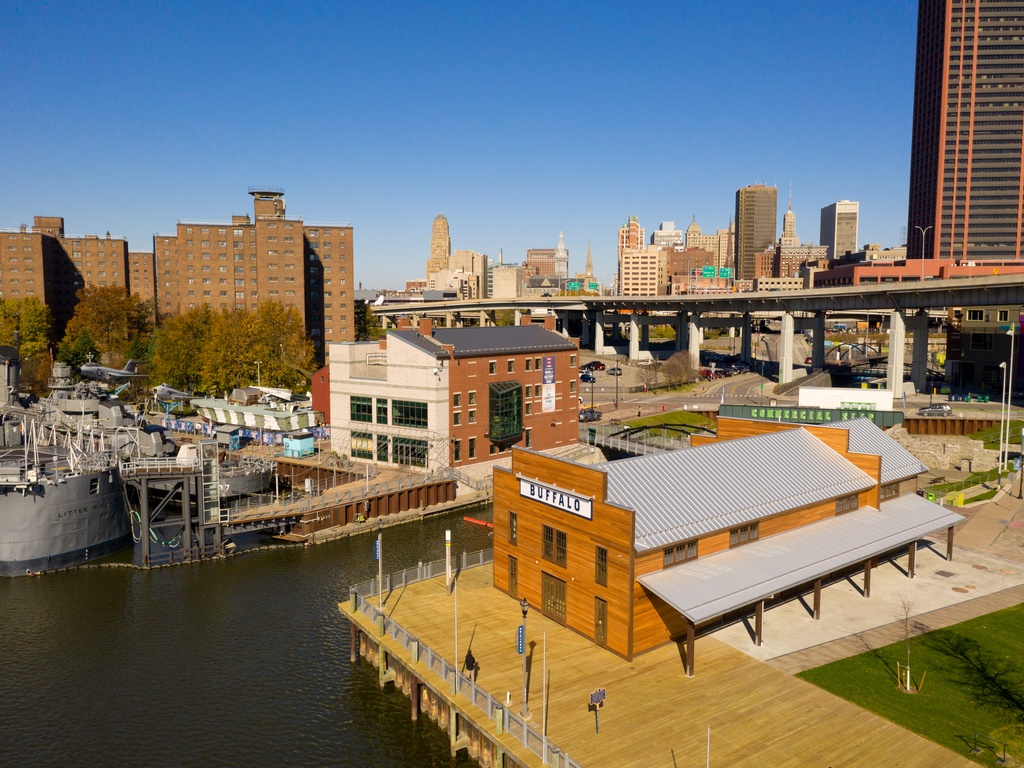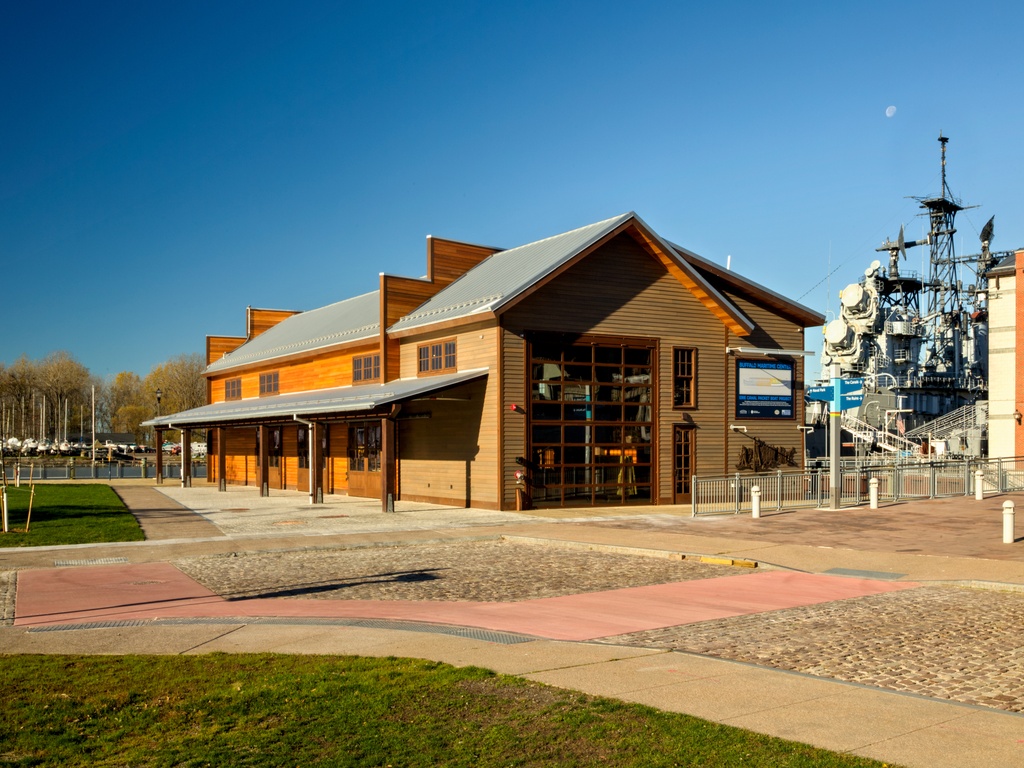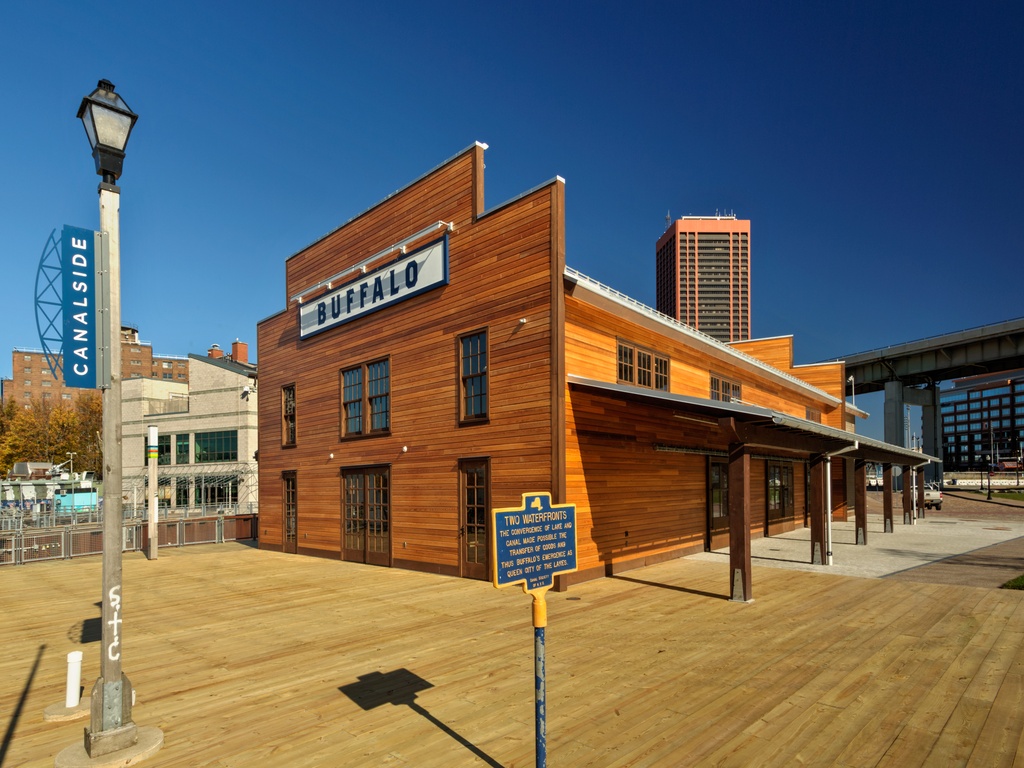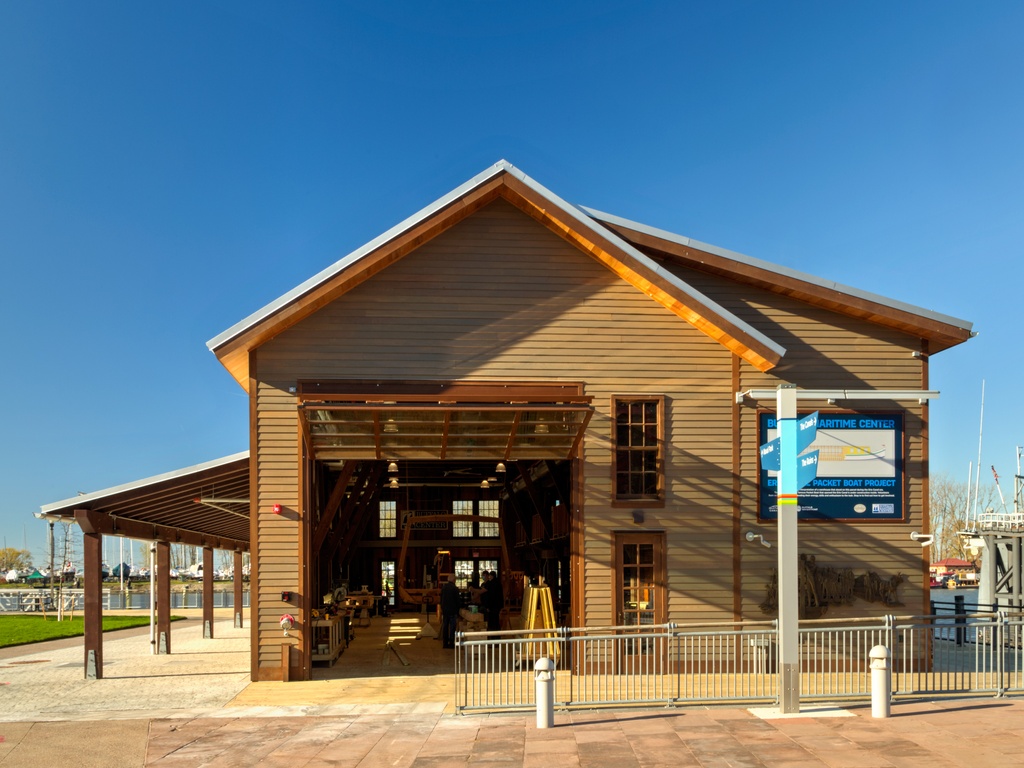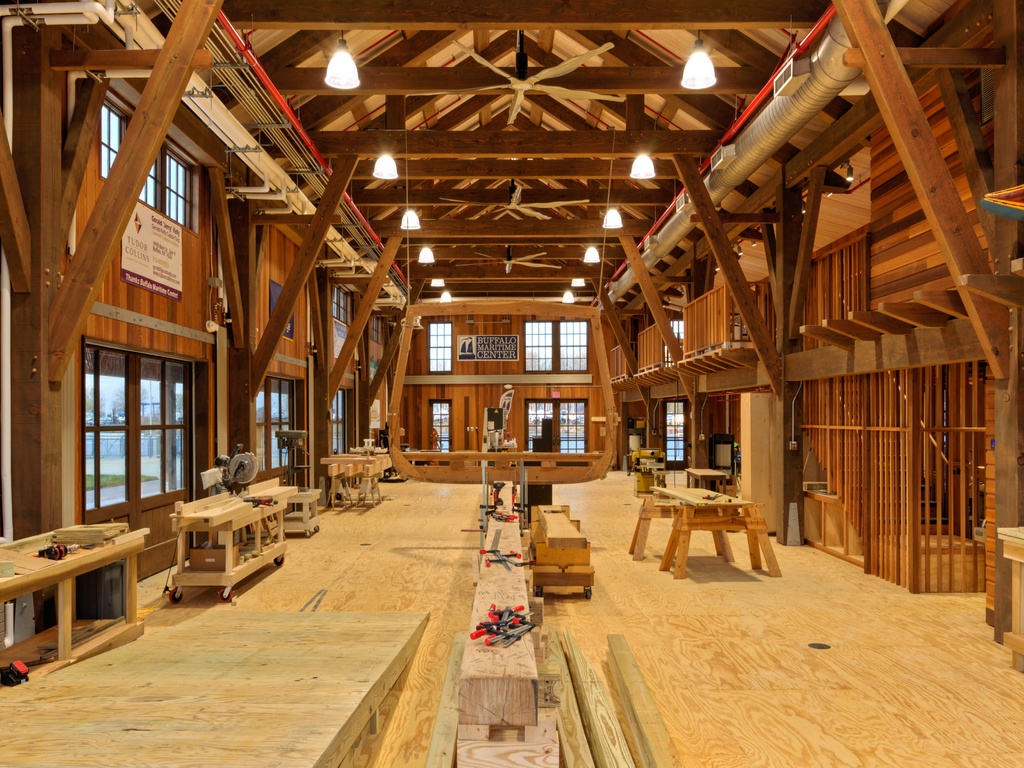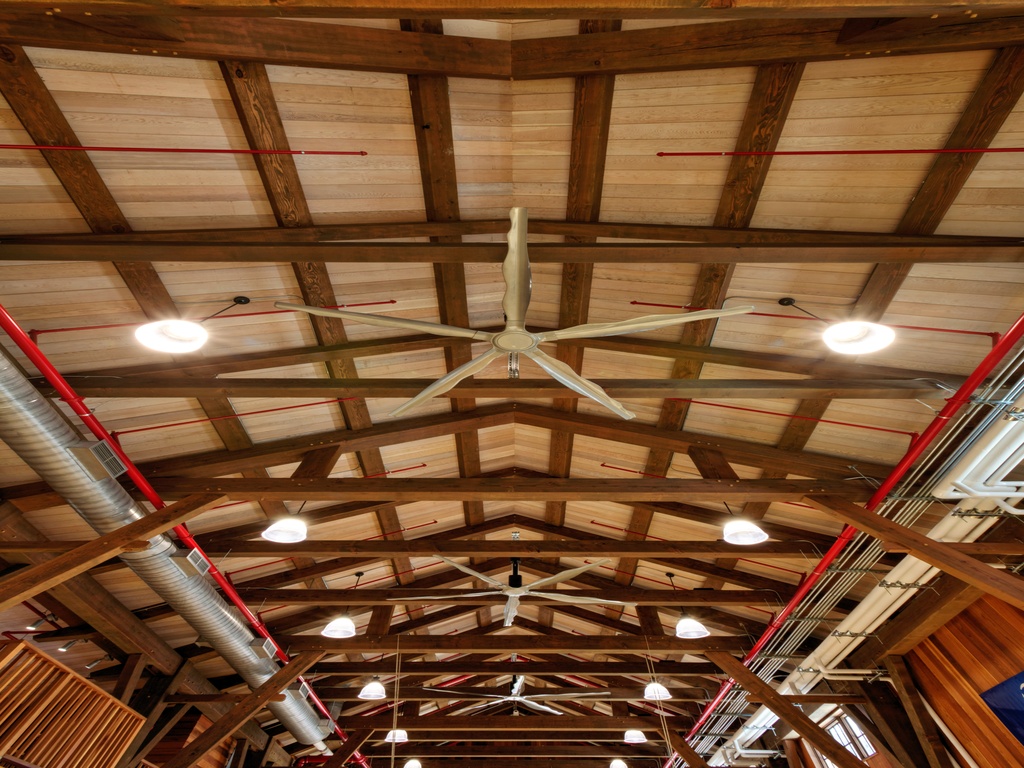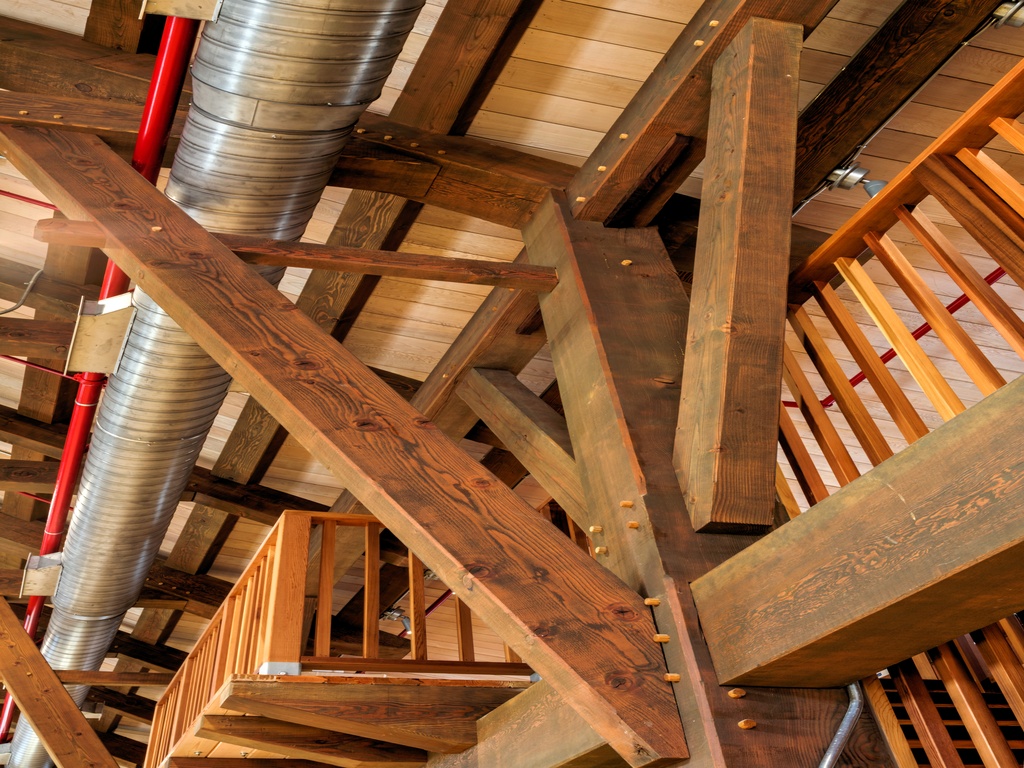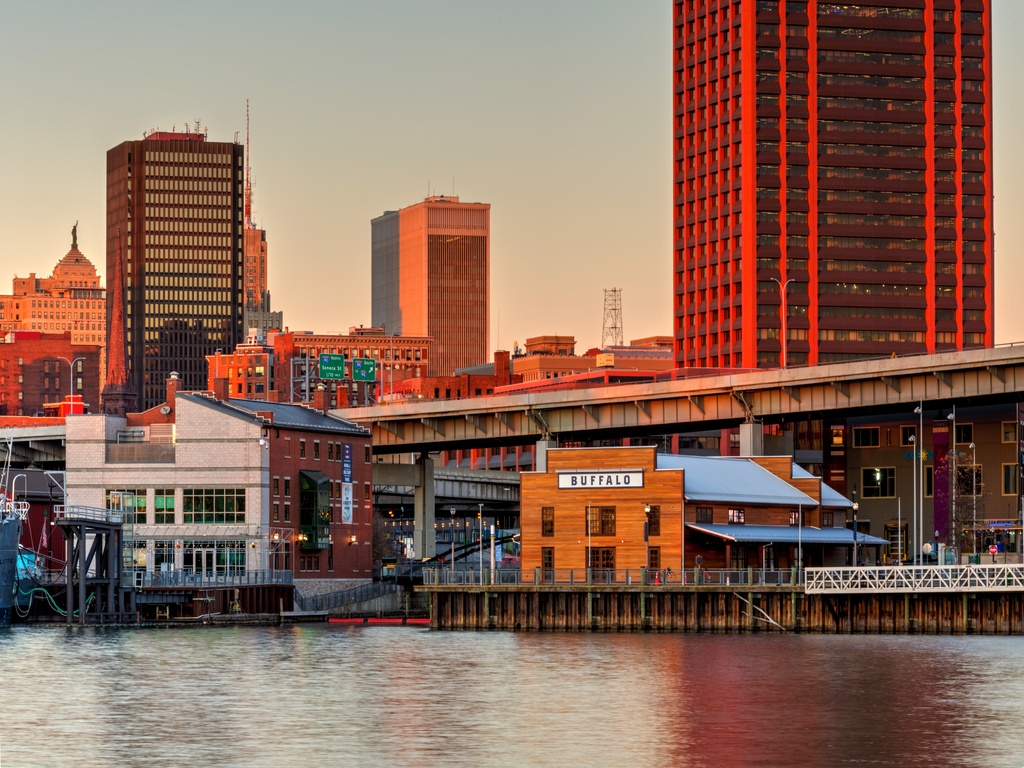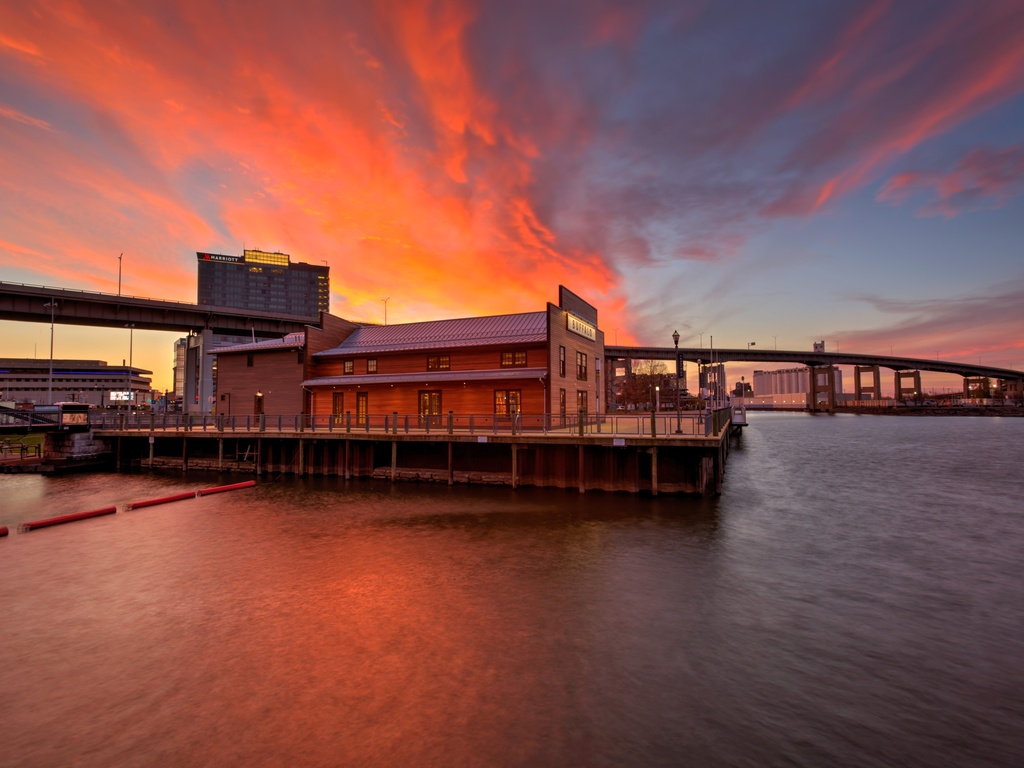
The Erie Canal Harbor Development Corporation desired new “interpretive” structures along the edges of the Erie Canal’s historic Commercial Slip at Canalside. Several options were considered and redesigned before one coalesced. This became the $4,000,000 Longshed Building: a 4,400 sq. ft. one-and-a-half story, heavy timber structure with a pile foundation and structural concrete slab on grade. The gabled-roof building reflects the Central Wharf site's history by incorporating elements from the Joy and Webster Storehouse found on the site in the early 1800s.
Within are public toilets, a large open work/gathering space, an overlooking mezzanine, office and storage spaces and mechanical support spaces. The open space includes an overhead-opening door onto the east side, along with sliding ‘barn’ glass doors opening onto a covered porch along the south side. Windows are included in the upper levels to add daylight. Large fans are also included inside to circulate air in the large open space for flexibility for year-round use.
The first occupant of the completed Longshed was the Buffalo Maritime Center, who built a traditional, full-sized replica of the Erie Canal Boat Seneca Chief, which originally opened the Erie Canal in 1825. This community boatbuilding effort took place from October 2020 to June 2024. It is currently floating in the Commercial Slip, next to the Longshed where the public is welcome to continue watching the boat being completed.
In 2025, the Seneca Chief embarked on its Bicentennial Voyage from Buffalo to New York Harbor, commemorating Gov. DeWitt Clinton’s 1825 inaugural journey. This voyage offers Buffalo and communities across New York State a chance to explore the past and plan for the future.
In advance of the Seneca Chief's voyage, the Longshed was reinvented as a gathering space and starting point for visitors beginning their own Bicentennial Commemoration journey, called Waterway of Change. The museum will include interactive multimedia exhibits for visitors of all ages and abilities, sharing Buffalo’s Erie Canal story in an inclusive and diverse way through the use of short films, touch screens, audio, historical artifacts and dramatic lighting. A series of outdoor interpretive exhibits will also be created at towpaths along and around the canals.
